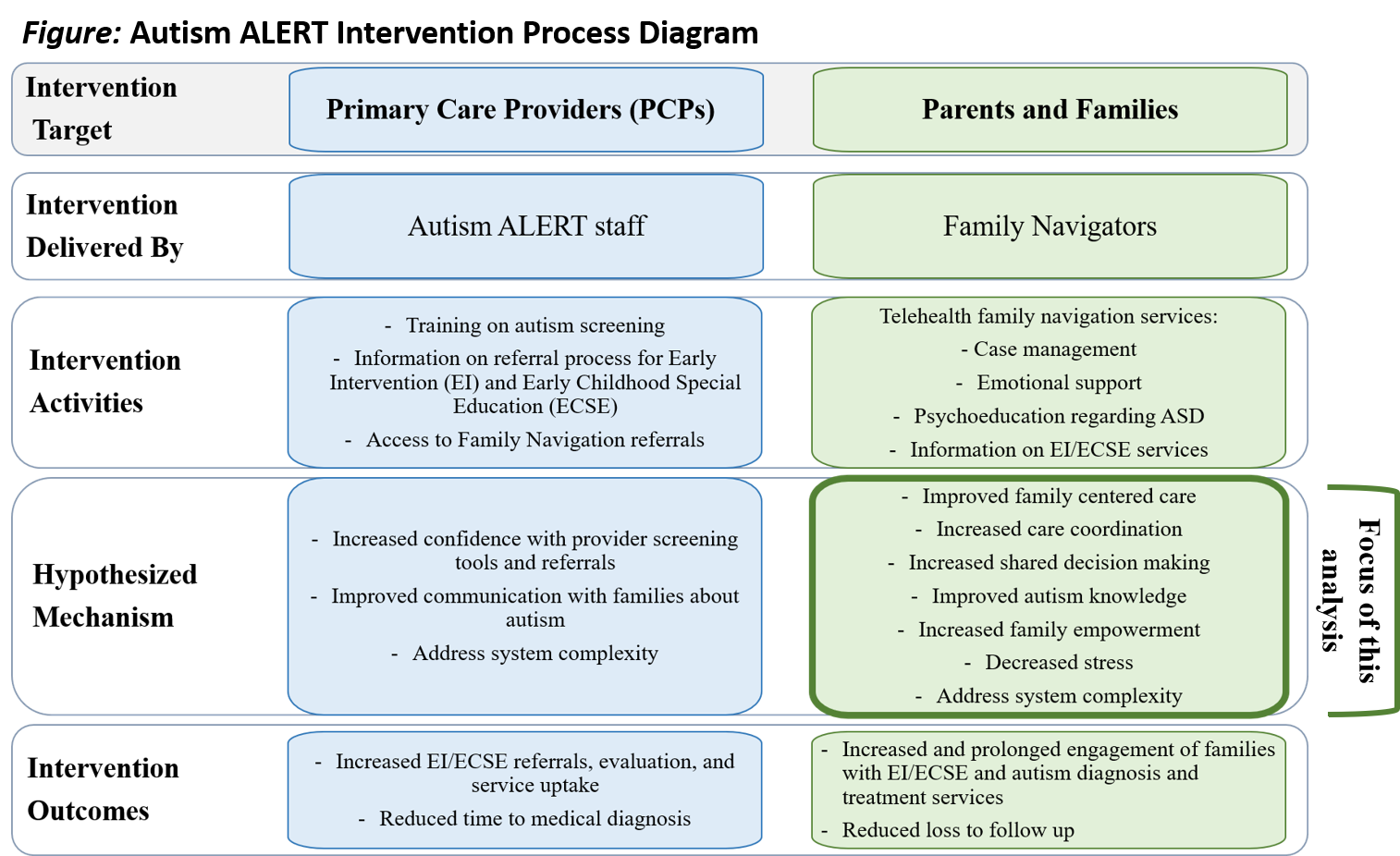Developmental and Behavioral Pediatrics
Session: Developmental and Behavioral Pediatrics 2: Autism
401 - Autism ALERT: Exploring the Experience of Families Working Toward Autism Evaluation and Diagnosis With Family Navigator Assistance
Friday, May 3, 2024
5:15 PM - 7:15 PM ET
Poster Number: 401
Publication Number: 401.236
Publication Number: 401.236

Jonathan Junqua, DO/MPH (he/him/his)
Resident Physician
Oregon Health & Science University School of Medicine
Beaverton, Oregon, United States
Presenting Author(s)
Background: Family navigation holds promise for reducing stressors and facilitating early autism diagnosis; however, little is known about how navigation impacts families’ experiences of autism diagnostic assessment.
Objective: To understand the family experience of tele-health autism navigation, and to explore mechanisms by which navigation improves access to care.
Design/Methods: This project evaluated Autism ALERT, a pilot site-randomized trial of family navigation for children with autism symptoms. 50 families participated from 7 Oregon primary care clinics: 30 received telehealth family navigation and 20 controls received information-only. Families in both arms completed 2 self-administered surveys: on enrollment (baseline) and after 6 months. Standardized scales were used to assess Family Centered Care (FCC), Care Coordination (CC), Shared Decision Making (SDM), Autism Knowledge, Family Empowerment, Family Stress, and Parenting Stress, and (in intervention arm) Navigator Satisfaction. Using intention to treat, we summarized change in each score from baseline to 6 months (change in mean/change in proportion), comparing intervention vs. control arms. We calculated p-values using Generalized Estimating Equation (GEE) difference-in-difference models. We summarized Navigator Satisfaction with descriptive statistics.
Results: Of 50 families enrolled in Autism ALERT, 48 completed the baseline (96%) and 36 (72%) completed the 6-month survey. Child participants were 17% female, 39.6% Latino, 85.1% English speaking and 56.3% White. Intervention families experienced non-significant increases in FCC (14.3% intervention vs 1.7% in control arm; p = 0.56) CC, (2.4% vs. –5% in control), SDM (19% vs. 11.7% in control; p=0.743), and Autism Knowledge (61% vs. 50% in control; p =0.49). Changes in family empowerment (-1.41 intervention vs. -1.23 in control; p=0.849) family stress (-0.66 vs. -0.45 in control; p=0.802), and parenting stress (2.09 vs. 1.83 in control; p= 0.80) were similar in both arms. 70% of intervention families felt satisfied or highly satisfied with all aspects of family navigation.
Conclusion(s): Majority of families had high satisfaction with family navigation. Non-significant positive effects were observed for FCC, CC, SDM, and autism knowledge. Although results are limited due to sample size, this pilot study suggests beneficial aspects of telehealth navigation for families. Future larger studies could provide more information on these and other mechanisms for family navigation success.

